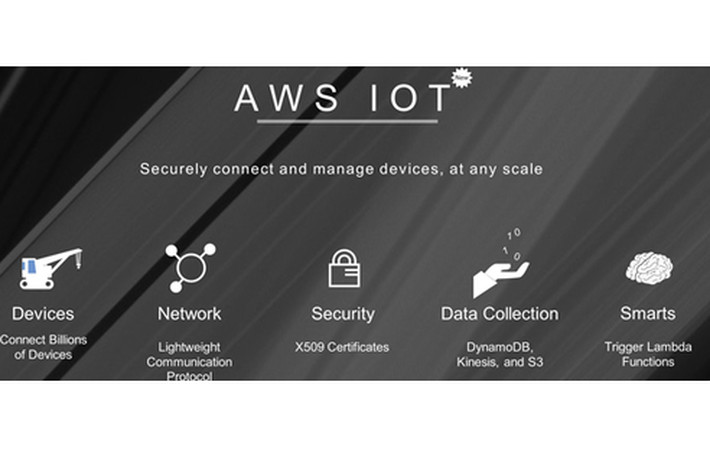
Published on 11/17/2016 | Strategy
Investment in IoT is a natural choice for Amazon.
The Internet of Things presents a tremendous opportunity to harness the data, and hence insights, from billions of devices connected to the Internet. For a business that thrives from better targeting its customers, better positioning its products, better building up its inventory from insights derived from real customer data, it makes total sense to invest in and grow the source of these insights. In addition, the IoT is a platform play that requires scale – which is at the core of Amazon’s operational excellence. So if this situation were to be related to job market, qualifications of the job candidate (Amazon) perfectly match the job requirements here (for building up an IoT platform).
Amazon already had a very successfully running AWS business and it could logically be extended to handle the IoT requirements, which is why the AWS IoT announcement didn’t come as a surprise to the industry. Amazon’s IoT offerings are aimed at enabling the IoT devices to become first class citizens of its cloud network. These include:
Special data ingestion devices
AWS IoT Gateway
AWS IoT Framework
SDKs for developers to work with IoT devices
AWS IoT Rules Engine
AWS API
AWS Registry to track IoT devices
Kinesis Analytics for analyzing high-volume streaming data
In addition, Amazon offers incentives to get more devices into its network by offering plans such as – a quarter million 512 byte device messages free every month - for upto 12 months, and up.
Amazon is not just offering software and services to enable 3rd party IoT Applications, but is also nurturing its IoT devices ecosystem.
In addition to a robust cloud platform and the above tools to support developers and OEMs in the IoT, Amazon has launched several consumer facing products and put partnerships in place to get the mindshare of consumers and hence fuel the growth of its IoT play. All these initiatives are aimed at growing Amazon’s IoT ecosystem as a whole.
Introduced in the summer of 2015, Dash Buttons are small thumb-sized, Wi-FI-enabled “buttons” that can be fixed to any device. They connect with a consumer’s Amazon Prime account enabling them to order products at the touch of a button.
While on one hand, these buttons will further Amazon in its traditional ecommerce business to sell more goods, on the other hand they are laying the foundation for smarter devices that will be making the lives of Amazon customers simpler and gathering valuable data for Amazon’s business.
These smarter devices could be “things” such as thermostats, webcams, coffee machines, and more.

These devices are electronic speakers and Internet-accessible voice-recognition systems that provide a new way to interface with the “things” in a connected home or office environment. Echo was introduced in the market in early 2015.
Echo has been designed as an open architecture in order to enable more and more devices to be able to interface with it. In addition, Echo is controllable by the Alexa smartphone application through a voice recognizing interface – which makes managing this device and configuring it much more intuitive and fun.
Amazon has developed partnerships with more than 30 different consumer packaged goods companies for its products. These partnerships (which continue to grow) are key to having a healthy range of products that can be replenished automatically –making consumers more tuned to this new mode of replenishing their pantries and laundries, and furthering the automation of Amazon’s order placement and delivery services through its IoT devices.
Amazon has established a $100 million venture capital fund called Alexa Fund to invest in early-stage companies that are working on voice-oriented applications and experiences that will build on the Echo voice platform and provide new IoT types of devices. Some of its investments include:
Petnet- a smart feeding appliance for pets
Scout – a do-it-yourself security system for homes
Mojio – a connected-car tracking and monitoring system
Sutro – a smart pool monitor
Musaic – an intelligent sound system for playing music and controlling lights
Rachio – an intelligent water sprinkler control system
Garageio – smart garage door monitor and opener
Amazon follows few simple rules (all across its business) –
Deliver low-cost, good-value, easy-to-use, scalable offerings
Build on core experience (leverage Amazon’s stack)
Seek out inefficiencies and optimize them
Create a platform/ecosystem that enables partnerships that can be further monetized
Keep things simple, technically and business model wise
Pursue high-volume markets where it can enjoy economies of scale
Take market share in the short term, even at the expense of profits
Optimize everything
That being said, it is easy to make an educated guess that Amazon will use its usual low-cost, market share-grabbing approach to stake out a large chunk of the IoT market. This will have significant impacts on Google, Apple, ATT, Comcast and other major and minor IoT players. Amazon can be expected to provide very low-cost IoT devices through its own efforts as well as through its partners. It can also subsidize the devices it gives away with add-on services like security or through sales of supplies and consumables through its ecommerce offerings.
Leveraging its relationships with ~70 million Prime members will allow Amazon to offer low-cost, ubiquitous, easy-to-use IoT devices to homes and businesses. IoT devices may be given away as a seeding strategy for its longer-term goals. Large IoT device manufacturers, some of who may be partnering with Amazon today, may see themselves competing with Amazon in the future. Smaller companies producing devices need to consider how to play in Amazon’s ecosystem to reach their audience, differentiate themselves and add value through unique business models and partnerships. But, small device companies and app developers also need to consider how they will respond if Amazon offers a comparable product or service at low or no cost. This could completely undermine their business models and existence.
No matter where one is in the IoT ecosystem, Amazon will be a force to be reckoned with. It’s a jungle out there, and there’s a relentless gorilla tromping around in it.